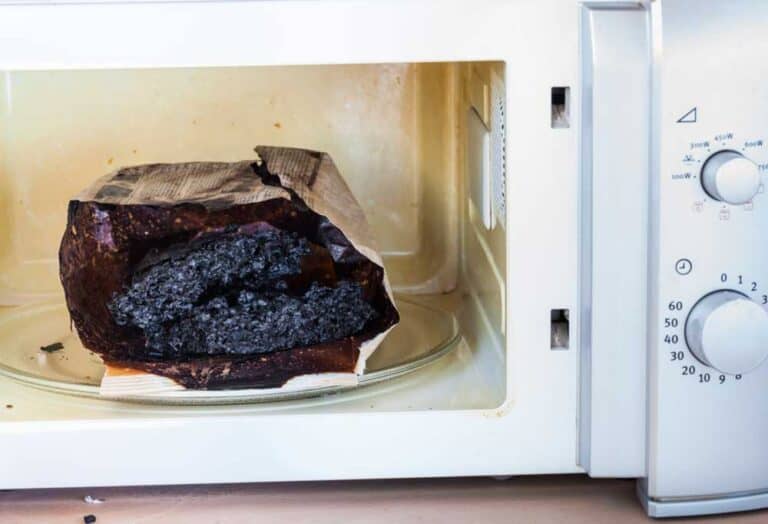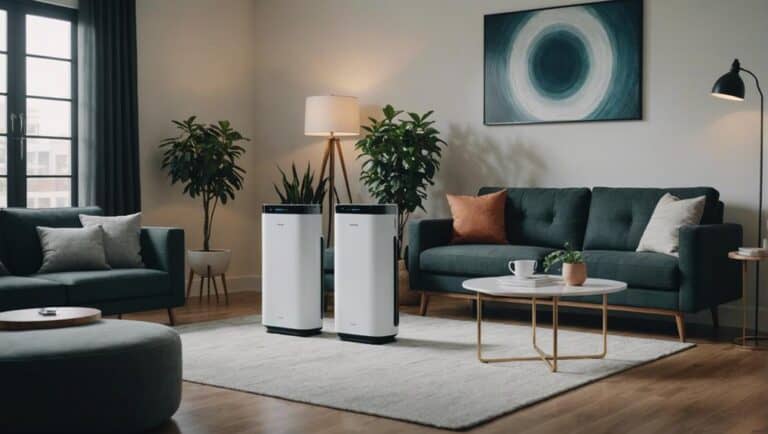Battle Against Mold: How Air Purifiers and Dehumidifiers Can Safeguard Your Indoor Environment
In the constant battle to maintain a healthy and safe indoor environment, one formidable opponent seems to persistently present itself: mold. Mold growth not only poses potential health risks but can also damage furniture, walls, and other structures within our homes or offices. However, fear not! The advancement of technology has gifted us with powerful tools in the form of air purifiers and dehumidifiers – weapons that can actively safeguard our living spaces against these unwelcome spores. In this article, we will delve into the efficacy of these devices as we explore their role in combating mold and ultimately creating a healthier living environment for all.
Understanding Mold: Causes, Health Risks, and Prevention
Mold is a common problem that many homeowners face. It thrives in damp and humid environments, making basements, bathrooms, and kitchens prone to mold growth. Leaks in pipes or roofs can also create conducive conditions for mold to flourish. When exposed to mold spores, individuals may experience allergic reactions such as sneezing, coughing, or watery eyes. In some cases, prolonged exposure to high levels of mold can lead to more severe health issues like respiratory problems or asthma attacks.
Preventing mold growth requires addressing the root causes of moisture accumulation in your home. Proper ventilation and adequate insulation help control indoor humidity levels. Fixing leaks promptly and ensuring proper drainage are also essential steps towards preventing mold from taking hold. Regularly cleaning areas prone to water damage with detergent eliminates existing molds before they multiply further.
Here are some measures you can take to prevent & combat against the growth of molds:
- Using an air purifier helps filter out airborne mold spores.
- Running a dehumidifier reduces excess moisture in the air.
- Ensuring proper ventilation by installing exhaust fans in bathrooms & kitchens.
- Regularly inspecting your home for any signs of water leaks or condensation buildup.
- Keeping indoor spaces clean by regularly dusting surfaces & vacuuming carpets.
- Maintaining relative humidity below 50% inside your home is ideal for preventing excessive moisture that encourages mold growth.
By understanding what causes molds to grow and implementing preventive measures like using air purifiers and dehumidifiers, we can safeguard our indoor environment from this persistent problem effectively.
The Role of Air Purifiers in Mold Prevention: How They Work and What to Look for
Air purifiers play a crucial role in preventing mold growth by removing airborne mold spores from the indoor environment. When installed correctly and used consistently, these devices can significantly reduce the presence of mold particles in your home or office.
Here’s how air purifiers work:
- Filtration: Air purifiers use filters to capture and trap mold spores as they circulate through the device. High-efficiency particulate air (HEPA) filters are highly effective at trapping small particles like mold spores, ensuring cleaner air quality.
- UV-C Technology: Some advanced air purifiers also incorporate UV-C technology, which uses ultraviolet light to kill airborne microorganisms like molds, bacteria, and viruses.
- Activated Carbon Filters: Activated carbon filters are commonly included in air purifier systems too. These filters help neutralize odors associated with mold while trapping volatile organic compounds (VOCs) that may contribute to poor indoor air quality.
When choosing an air purifier for mold prevention, look out for these key features:
- A HEPA filter that is capable of capturing tiny particles
- Coverage area suitable for your space size
- Noise levels within an acceptable range
- Energy-efficient operation to minimize electricity consumption By investing in a quality air purifier with proper filtration capabilities and considering factors such as room size and noise levels, you can effectively combat against the threat of indoor mold growth
Choosing the Right Air Purifier: Key Features and Considerations
Key Features and Considerations in Choosing an Air Purifier
When choosing an air purifier to combat mold, there are several key features and considerations to keep in mind.
- Filtration system: Look for an air purifier with a high-efficiency particulate air (HEPA) filter. HEPA filters can capture tiny particles as small as 0. 3 microns, including mold spores.
- Coverage area: Consider the size of the space you need to purify before purchasing an air purifier. Make sure the model you choose has sufficient coverage for your room or home.
- CADR rating: CADR stands for Clean Air Delivery Rate, which measures how well an air purifier removes pollutants from the air. When comparing different models, look for one with a higher CADR rating.
- Additional features: Some air purifiers come with additional features such as automatic sensors that adjust fan speed based on detected pollution levels or indicator lights that remind you when it’s time to replace filters.
Factors to Keep in Mind While Shopping
While shopping for an ideal dehumidifer or druvenator:
- Assess moisture levels: Before making a purchase decision, evaluate the specific humidity needs of your indoor environment using hygrometers.
- Consider configuration : Think about where and how you plan on placing your unit.
- Size Matters : Choose a suitably sized unit considering factors like square footage and clearance space requirements..
- Sound Level: If noise is likely going be major factor then find out details regarding sound produced by the two units under consideration.
- Longevity & Durability: Check consumer reviews & ratings about either product under review
Dehumidifiers: An Effective Weapon Against Mold
The Power of Dehumidifiers in Preventing Mold Growth
Mold is not only unsightly, but it can also pose serious health risks to individuals living in damp environments. By using dehumidifiers, you can effectively control the moisture levels in your home and prevent the growth of mold.
- How Does a Dehumidifier Work?A dehumidifier works by drawing excess moisture from the air, which reduces humidity levels. As a result, it creates an inhospitable environment for mold to thrive.
- Benefits of Using a Dehumidifier:
- Prevents Mold Growth: By keeping humidity levels below 50%, dehumidifiers inhibit the growth and spread of mold.
- Eliminates Musty Odors: Excess moisture often leads to musty odors in homes. Dehumidifiers remove this excess moisture from the air, leaving your space fresh and odor-free.
- Improved Air Quality: Dehumidifiers reduce allergens such as dust mites and mildew spores, improving indoor air quality for those suffering from allergies or respiratory conditions.
Incorporating a dehumidifier into your battle against mold will help create a healthier environment for you and your loved ones. Take control of excess moisture with this essential weapon against mold infestation.
Exploring Different Types of Dehumidifiers: Which One Is Right for You?
Types of Dehumidifiers
Dehumidifiers are essential for controlling humidity levels in your indoor environment, thereby preventing mold growth. There are several types of dehumidifiers available on the market to suit different needs:
- Cooling (or refrigerant) dehumidifiers: These are the most common type and work by pulling in air through a fan and passing it over cooling coils to condense moisture. The condensed water then drips into a tank or drains out through a hose.
- Desiccant dehumidifiers: Ideal for colder climates, these units use a desiccant material, like silica gel, to absorb moisture from the air. Unlike cooling dehumidifiers, desiccant models don’t require access to warm temperatures for operation.
- Whole-house dehumidifier: Designed specifically for larger spaces or whole homes, these units connect directly to the HVAC system and can remove significant amounts of moisture from the air throughout your entire living space.
Choosing the Right Dehumidifier
When selecting a dehumidifier for your home or office, consider factors such as room size and humidity level:
- Determine the square footage of your space: Measure each room’s length and width with measuring tape and multiply them together to calculate its area in square feet.
- Consider efficiency: Look for Energy Star certified models that consume less electricity while still providing effective moisture removal.
- Check pint capacity: Dehumdifier pint capacity refers to how much water it can extract from the air within 24 hours—choose one that matches your room size and average humidity level.
- Evaluate noise level: Some models create more noise than others; choose quieter options if you plan on using them in bedrooms or quiet working areas.
By understanding different types of dehudmidifers available on the market and considering key factors when choosing one suitable for your needs, you can effectively combat mold growth and maintain a healthy indoor environment.
Maintaining and Using Air Purifiers and Dehumidifiers: Best Practices for Optimal Performance
Regularly Cleaning the Filters
- To ensure optimal performance of your air purifier, it is crucial to clean or replace the filters regularly. This helps in trapping dust particles, allergens, and mold spores effectively.
- Follow the manufacturer’s instructions on how often you should clean or replace the filters.
- Set a reminder to inspect and clean your air purifier’s filters every month if reusable, or change them when necessary.
Proper Placement of Air Purifiers
- Positioning your air purifier correctly enhances its effectiveness. Place it in areas where mold growth is more likely such as basements, bathrooms, or kitchens; close windows during usage; locate it away from obstacles that can obstruct airflow.
- Ensure proper circulation by not placing furniture directly in front of an air purifier. This will allow better distribution of purified air throughout the room.
Humidity Control with Dehumidifiers
- Mold thrives in damp environments so using a dehumidifier can significantly reduce indoor moisture levels below 60%.
- Empty water collection tanks regularly for uninterrupted operation and avoid potential overflow spills.
By following these best practices for maintaining and utilizing air purifiers and dehumidifiers effectively, you can optimize their performance in safeguarding your indoor environment against mold growth.
Case Studies: Success Stories of Mold Prevention with Air Purifiers and Dehumidifiers
Case Study 1: Residential Home in a Humid Climate
In a coastal city known for its high humidity levels, the Smith family experienced recurring mold issues in their home. Concerned about the health risks associated with mold exposure, they decided to invest in an air purifier and dehumidifier combo. By placing the air purifier strategically in the living room and running the dehumidifier consistently, they successfully reduced moisture levels and eliminated mold growth throughout their home. The Smiths now enjoy a clean, healthy indoor environment without worries of mold contamination.
Case Study 2: Commercial Building with Water Damage
When heavy rain caused water damage to a commercial building’s basement, management quickly realized that there was an urgent need for effective mold prevention measures. They promptly installed industrial-grade air purifiers and dehumidifiers on each floor to combat excess moisture and prevent mold from spreading. Regular maintenance checks ensured optimal performance of these devices. As a result, no new signs of mold have been detected since implementation, providing peace of mind for both employees and customers.
By sharing these real-life success stories from different types of environments – residential homes and commercial buildings – we hope to demonstrate how air purifiers and dehumidifiers can be valuable tools in preventing harmful molds from thriving indoors.
Additional Strategies for Mold Prevention: Tips and Tricks to Keep Your Indoor Environment Mold-Free
Maintain Proper Ventilation
- Open windows or use exhaust fans in areas prone to moisture, such as bathrooms and kitchens, to improve airflow and reduce humidity.
- Ensure that clothes dryers and gas appliances are ventilated properly to prevent condensation.
Control Humidity Levels
- Monitor the humidity level in your home with a hygrometer and aim to keep it below 50 percent.
- Use dehumidifiers in damp areas of your house, like basements or laundry rooms, to remove excess moisture from the air.
Fix Water Leaks Promptly
- Inspect your plumbing regularly and repair any leaks immediately.
- Check under sinks, near water heaters, and around windows for signs of water damage or mold growth.
By following these additional strategies along with using air purifiers and dehumidifiers as mentioned earlier, you can effectively combat mold growth in your indoor environment. With proper ventilation, controlled humidity levels, and prompt leak repairs, you will be on your way towards maintaining a healthy mold-free space.






